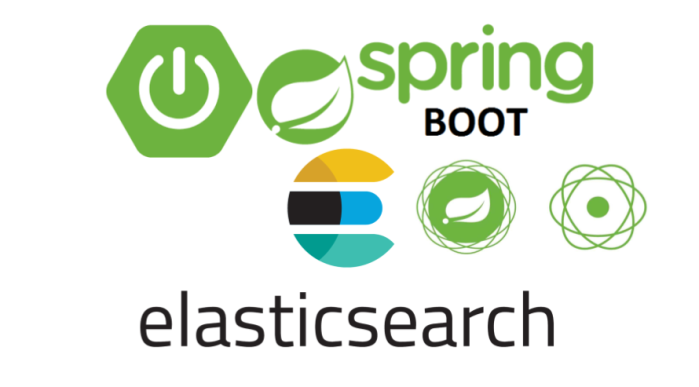Since Spring 5 and Spring Boot 2 there is a full support for reactive REST API with Spring WebFlux project. Also project Spring Data systematically includes support for reactive NoSQL databases, and recently for SQL databases too. Since Spring Data Moore we can take advantage of reactive template and repository for Elasticsearch, what I have already described in one of my previous article Reactive Elasticsearch With Spring Boot. Continue reading “Performance Comparison Between Spring MVC and Spring WebFlux with Elasticsearch”
Month: October 2019
Reactive Elasticsearch With Spring Boot
One of more notable feature introduced in the latest release of Spring Data is reactive support for Elasticsearch. Since Spring Data Moore we can take advantage of reactive template and repository. It is built on top of fully reactive Elasticsearch REST client, that is based on Spring WebClient. It is also worth to mention about support for reactive Querydsl, which can be included to your application through ReactiveQueryPredicateExecutor. Continue reading “Reactive Elasticsearch With Spring Boot”
Reactive Logging With Spring WebFlux and Logstash
I have already introduced my Spring Boot library for synchronous HTTP request/response logging in one of my previous articles Logging with Spring Boot and Elastic Stack. This library is dedicated for synchronous REST applications built with Spring MVC and Spring Web. Since version 5.0 Spring Framework also offers support for reactive REST API through Spring WebFlux project. I decided to extend support for logging in my library to reactive Spring WebFlux.
Continue reading “Reactive Logging With Spring WebFlux and Logstash”
Using New Spring Cloud Load Balancer In Microservices Communication
Almost a year ago Spring Cloud has announced that most of Spring Cloud Netflix OSS projects will be moved to the maintenance mode starting from Spring Cloud Greenwich Release Train. In fact the maintenance mode only does not include Eureka, which still will be supported. I referred to that information in one of my previous articles The Future of Spring Cloud Microservices After Netflix Era. I have shared there some opinions about future of microservices with Spring Cloud. Of course, I also included an example of building microservices architecture without Netflix OSS using HashiCorp’s Consul, Spring Cloud Gateway and an early version of Spring Cloud LoadBalancer.
Continue reading “Using New Spring Cloud Load Balancer In Microservices Communication”
Part 1: Testing Kafka Microservices With Micronaut
I have already described how to build microservices architecture entirely based on message-driven communication through Apache Kafka in one of my previous articles Kafka In Microservices With Micronaut. As you can see in the article title the sample applications and integration with Kafka has been built on top of Micronaut Framework. I described some interesting features of Micronaut, that can be used for building message-driven microservices, but I specially didn’t write anything about testing. In this article I’m going to show you how to test your Kafka microservice using Micronaut Test core features (Component Tests), Testcontainers (Integration Tests) and Pact (Contract Tests).
Continue reading “Part 1: Testing Kafka Microservices With Micronaut”
Overview of Java Stream API Extensions
Stream API, which has been introduced in Java 8, is probably still the most important new feature that has been included to Java during last several years. I think that every Java developer has an opportunity to use Java Stream API in his career. Or I should rather told that you probably use it on a day-to-day basis. However, if you compare the built-in features offered for functional programming with some other languages – for example Kotlin – you will quickly realize that the number of methods provided by Stream API is very limited. Therefore, the community has created several libraries used just for extending API offered by pure Java. Today I’m going to show the most interesting Stream API extensions offered by the three popular Java libraries: StreamEx, jOOλ and Guava.
Using logstash-logging-spring-boot-starter for logging with Spring Boot and Logstash
I have already described some implementation details related to my library logstash-logging-spring-boot-starter for HTTP request/response logging in one of the previous articles Logging with Spring Boot and Elastic Stack. The article has been published some weeks ago, and since that time some important features has been added to this library. Today I’m going to summarise all those changes and describe all the features provided by the library.
Deploying Spring Boot Application on OpenShift with Dekorate
More advanced deployments to Kubernetes or OpenShift are a bit troublesome for developers. In comparison to Kubernetes OpenShift provides S2I (Source-2-Image) mechanism, which may help reduce a time required for preparation of application deployment descriptors. Although S2I is quite useful for developers, it solves only simple use cases and does not provide unified approach to building deployment configuration from a source code. Dekorate (https://dekorate.io), the recently created open-source project, tries to solve that problem. This project seems to be very interesting. It appears to be confirmed by RedHat, which has already announced a decision on including Dekorate to Red Hat OpenShift Application Runtimes as a “Tech Preview”. Continue reading “Deploying Spring Boot Application on OpenShift with Dekorate”







